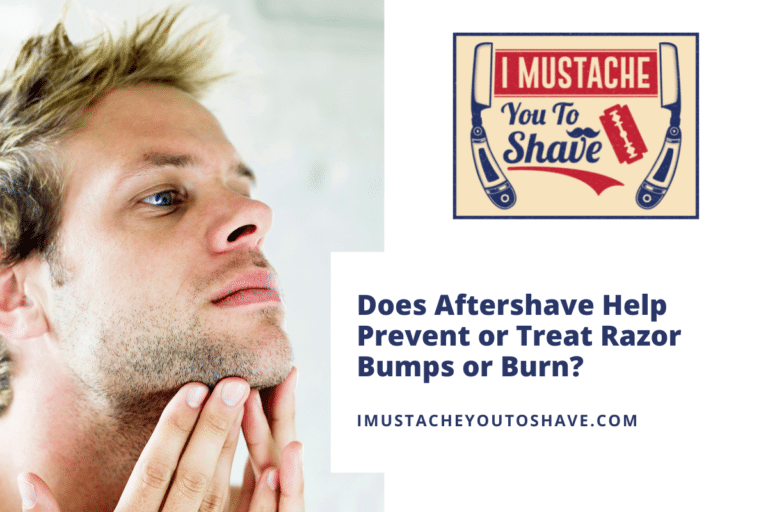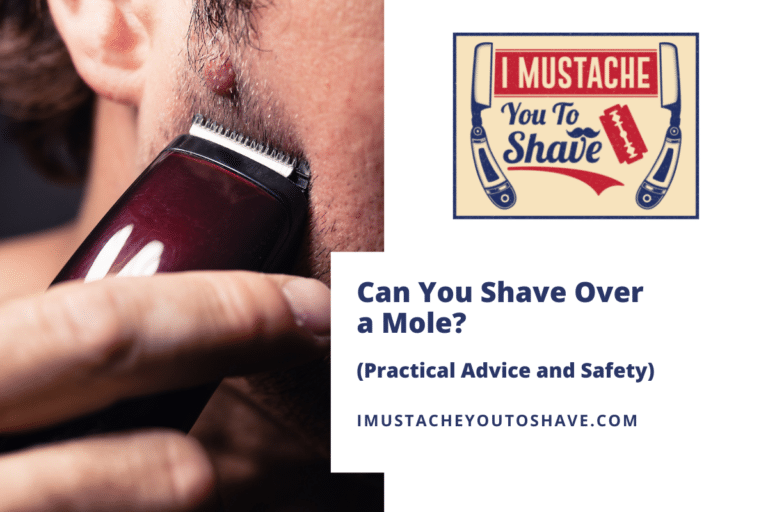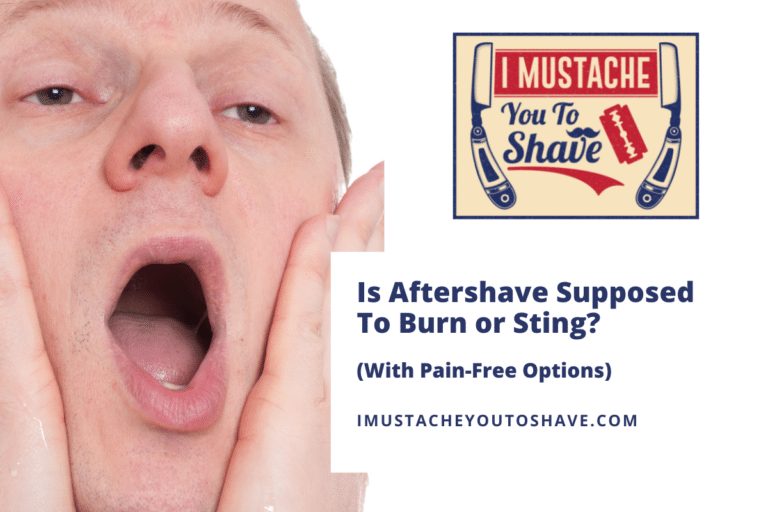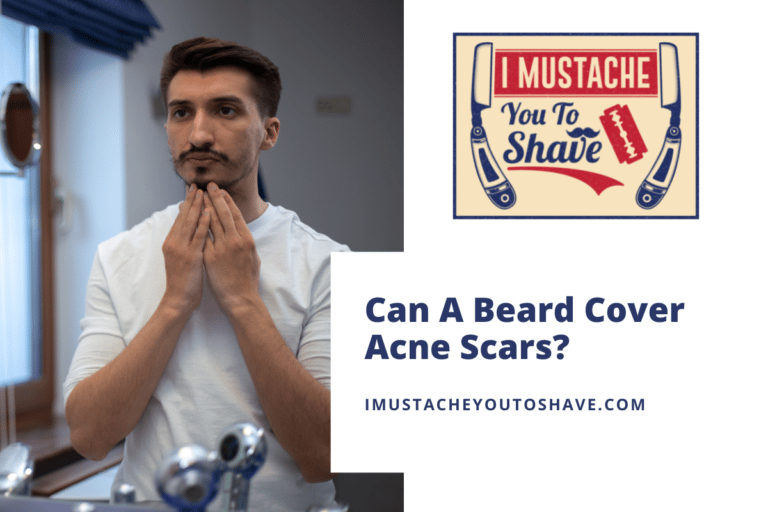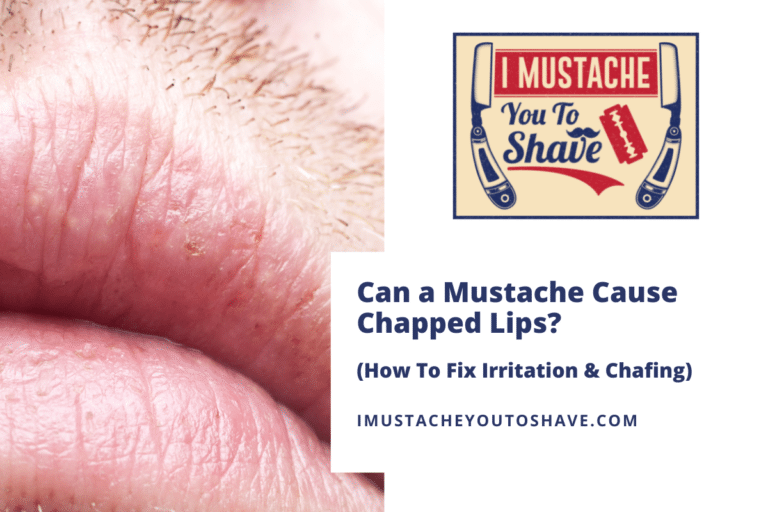Alum Block Vs Aftershave (Pros, Cons, and Practical Advice)
If you are new to the wet shaving world or even a seasoned pro, you may wonder if it’s best to use an alum block or an aftershave post-shave. Actually, you don’t have to choose.
The difference between an alum block and an aftershave is the end goal. An alum block disinfects and helps stop bleeding due to nicks and cuts. Aftershaves typically come in various scents and can heal and moisturize the skin. Both products can be used either alone or in tandem. It all depends on your goals and preferences.
If you want to learn the basics of alum versus aftershave use, read on!
Is an alum block the same as an aftershave?
Alum blocks. Aftershaves. Lotions. Balms. Splashes. There are so many products being thrown around on shaving forums, that it can be overwhelming. How do you decide which post-shave products to buy?
While an alum block and aftershave have some similarities, they are not the same. An alum block works as an antiseptic that also stops bleeding in its tracks. An aftershave can provide antiseptic qualities but also works to moisturize and protect while providing a pleasant scent.
Alum blocks and aftershaves work nicely together, but they can also be used separately. When an alum block is rubbed over the skin, you may feel tingling depending on how many small cuts have occurred.
Aftershaves come in a variety of formulations. The most common are balms, lotions, and splashes. The one you choose will be largely dependent on your skin type. Aftershaves are also known for their scents. From sandalwood to sage, there’s sure to be a match for your olfactory mood.
What is an alum block?
The Egyptians were onto something when they began mining alum in ancient times. Through the centuries it has been used for a myriad of things from making fabric dyes colorfast to a healing elixir. At the turn of the 20th century, medical and skin benefits became the focus.
An alum block is made from the naturally-occurring chemical compound, alum, and either potassium or ammonium. The most common alum mixture used for aftershave skin treatment is potassium aluminum sulfate. Alum blocks provide anti-bacterial, anti-inflammatory, and astringent benefits to the skin.
Nicks and cuts are a normal part of the shaving process, especially when starting with traditional wet shaving. While the cuts are usually minor, bacteria have the opportunity to creep in. That’s why an anti-bacterial product, like an alum block, is useful after shaving.
Not only does alum kill harmful bacteria, but it also constricts the blood vessels stopping bleeding in its tracks.
What is aftershave?
Because aftershaves often have pleasant scents, many people tend to confuse aftershave and cologne. They are not the same. Cologne is all about pleasing the sense of smell. Aftershave is a skin treatment with the benefit of scent.
Aftershave is a topical treatment for the skin. The purpose of aftershave is to soothe and add moisture to freshly shaven the skin. Aftershaves come in balm, lotion, and splash versions. They can contain a variety of ingredients to target different skin types and issues.
An aftershave product should always be part of your shave routine. No matter how skilled your razor skills, freshly-shaved skin is still ravaged by friction. Aftershave helps counter these effects and prevent irritation.
Should you use an alum block or aftershave after shaving?
Alum blocks and aftershaves both sound beneficial and intriguing so which one should you use after shaving? Many men keep both products on hand and use them separately or together as their skin dictates.
If your post-shave goals are to stop bleeding and kill bacteria, an alum block is an excellent choice. If your primary goals are to re-hydrate and soothe itchy, irritated skin, then aftershave will be a great fit.
If you need to address all of these concerns, then dual use of both products is ideal.
Is alum better than aftershave?
When you put alum up against aftershave, there isn’t a clear winner. Both products are effective at healing skin. Your skin type and preferences can help you make an informed decision. Having both products in your shaving cabinet means you are prepared for every shaving situation.
Alum is a coagulant so it’s known for stopping weepers quickly. It also has a variety of skin benefits like reducing inflammation and irritation. For men with sensitive skin, alum can be drying. Aftershave can provide most of the benefits of alum with added moisturizers and soothing agents.
Fun Fact: In the 1800s, popular aftershave products included ingredients like prussic acid and the essence of bitter almonds which both contained a level of cyanide. They were mixed with tongue pleasing ingredients like cherry. They were finally banned because men would splash and guzzle.
How to choose the right alum block
While alum blocks resemble a white crystallized soap bar, they are not the only alum option.
Alum blocks come in different shapes and sizes. Blocks are perfect for home use. Sticks are great for travel. Styptic pencils are best for spot treatment. Keeping your lifestyle in mind will help you choose the right alum for your shaving arsenal.
Alum blocks are moistened with water and rubbed over the skin. Any residue is rinsed off of the skin after 30 seconds to 1 minute. These blocks can last a very long time, but they can also be a tad messy and unwieldy to use.
Another alum “block” option comes in stick form. The alum is placed into a plastic “lipstick” like container with a cap. This option is great for travel as it’s virtually mess-free and ergonomically applied.
A styptic pencil is an alum block’s little brother. While the above two options can be used all over the shaven area, the alum pencil is made to spot treat any nicks or cuts to stop bleeding.
How to choose the right aftershave
Google the word “aftershave” and your head is likely to explode. There are so many choices on the market today. Drugstores, discount stores, online retailers, and specialty shaving shops carry aftershaves with a myriad of ingredients and scents.
In order to choose the right aftershave, consider your skin type and lifestyle. Dry or sensitive skin benefits from different ingredients than oily skin. Look at the ingredient list to find the best product match for your skin type. Lifestyle also plays a part in the best aftershave choice.
Many aftershaves, especially the splash versions, contain alcohol. If you already suffer from dry skin, this ingredient would be on your avoid list. There are plenty of alcohol-free splashes, balms, and lotions to choose from.
If you are a jet setter, a liquid splash might not be the best choice due to leakage and security checks at the airport. A thicker lotion might be the better choice for your travel Dopp kit, while a splash would serve you well at home.
Determine your skin type
Do you know your skin type? If you aren’t sure, take a look at this skin type checklist.
It’s easy to determine your skin type. Dry skin flakes easily and feels tight. Oily skin stays slick and shiny and is prone to breakouts. Combination skin can have characteristics of both dry and oily skin in different areas. Sensitive skin can get irritated easily.
There’s an aftershave available to address your skin concerns.
Identify what type of aftershave you need
Our skin is our largest organ and it takes a lot of abuse from the elements and environment. Even the things we eat and drink can affect our skin. You might have super dry skin in the winter, but combination skin in the summer.
Once you have determined your skin type, choose the correct aftershave to address your skin concerns:
- Balms are best suited for dry or sensitive skin.
- Splashes are useful on oily skin.
- Lotions are perfect for normal or combination skin.
Since your skin type can change with time or season, you may need to change up your aftershave routine from time to time.
After your skin type is established, some ingredient knowledge is also helpful. Alcohol-based products absorb oil but can be too drying. Witch hazel is a non-drying alcohol alternative. Shea butter is a great moisturizer but can feel greasy on already oily skin. Some oils clog pores while others don’t.
Pick a quality aftershave
All aftershaves aren’t created equally. Some are filled with chemicals and additives which can irritate skin – the opposite effect you want after a shave.
When choosing a quality aftershave, read labels and look for simple, pronounceable ingredients that will work synergistically with your skin type. Balms can heal dehydrated skin. Lotions can soothe and heal. Splashes can shrink pores and reduce oil.
We’ve curated our favorite quality splashes, balms, and lotions to address your skin concerns.
Splashes
Splashes are a perfect choice for oily skin.
Alcohol-free versions like Lucky Tiger Aftershave & Face Tonic provide skin healing without the burn. Filled with healing ingredients like aloe vera, calendula, and chamomile, users refer to this splash as “the perfect aftershave” and “the bomb-diggity for soothing sore skin.” It’s mild enough to use on sensitive skin too.
Balms
Balms are great for dry or sensitive skin.
Pre de Provence No. 63 After Shave Balm is a shaving enthusiast favorite. The ingredients are simple and hydrating making it a perfect choice for dry skin. Infused with shea butter, shea oil, and aloe vera it provides “day-long moisture with no greasy feel.”
Lotions
Lotions are normal and combination skin’s best friend. They are light, hydrating, and soothing.
Even if your skin doesn’t have any major issues, it still needs to be pampered after a shave to keep bumps and burns at bay. If you are a morning shaver and plan to hit the lake or pool after, this Nivea lotion does double duty as sunscreen. Users say it “goes on thick, but dries quickly without sticky residue.” It also reduces the signs of aging.


